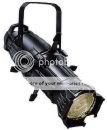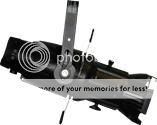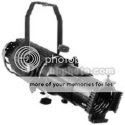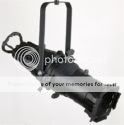You are using an out of date browser. It may not display this or other websites correctly.
You should upgrade or use an alternative browser.
You should upgrade or use an alternative browser.
A Patent Infringment Lawsuit
- Thread starterSTEVETERRY
- Start date
ENR's took down Colortran, I thought, due to their tendency to melt and then catch on fire. Seeings as they were made from plastic, I always bought this story. Was I mistaken?
Gotta do some digging, but I thought I read recently that the early ENR's had aluminum contacts of some such, and that was what heated up, melting the plastic and causing some melt-downs that totally burned out downtown Las Vegas. Just checking to see if Dereks's paying attention.
Easy enough to retro-fit to copper, which is what Colortran did, but coming on the heals was C-Trans lawsuit against Cunningham and ETC, which they lost and which cost some million or some such. Eats into your cash flow and next thing they are owned by NSI of all things.
Hoping someone can fill any any juicy details.
SB
Les
Well-Known Member
In response to Goph704:
In this post I have added photos of each "optically modern" fixture I could think of, except the Selecon Pacific. These include instruments accused of being knock-offs. Which is everything except the first pic.
ETC Source Four

Lightronics Ellipse

Altman Shakespeare

Strand SL

Leviton Leo

In this post I have added photos of each "optically modern" fixture I could think of, except the Selecon Pacific. These include instruments accused of being knock-offs. Which is everything except the first pic.
ETC Source Four

Lightronics Ellipse

Altman Shakespeare

Strand SL

Leviton Leo

Last edited:
It's a hard model to fit into your company's repertoire without getting called out for having jacked the design from someone else. Consider it, they all have the same features for the most part, in slightly different designs. Patent infringement is far more air-tight than the amount a company could easily design their way around. In my mind, Selecon is the only company to have replicated anything that's a far cry from the S4, but that's not to say that any single company should be blamed for not being able to produce anything else. You'd be asking each company to ultimately provide the same product, but maybe with a slightly altered bell or whistle.
Remember Altman and Strand have paid a licensing fee to be able to use patented features of the design. So while they are similar they did it the legal way. Lightronics has not.
I didn't know Leviton made one of these S4-like instruments... Does anyone know if they have paid the license or is it distinct enough to not require it?
I didn't know Leviton made one of these S4-like instruments... Does anyone know if they have paid the license or is it distinct enough to not require it?
The founding of Electronic Theatre Controls, in Fred Foster's own words, as appeared in the March 2001 issue of Live Design.
After high school, I went to the University of Wisconsin in Madison and started taking theatre courses. This was 1975, and Gilbert Hemsley was teaching, and so I took his courses. I was really much more into the technology and being an electrician, I think. I find that I can cue, I can do a light plot. But what ultimately is my downfall is color. Scientifically I understand color, but to this day my wife and daughter dress me.
Anyway, in one of the theatres at the college we had a Cue File [Thorn/Kliegl Q-File], which was this English product Kliegl sold that had three racks of electronics, not even a microprocessor in it, and it cost a quarter of a million dollars. I said to my brother, who’s a couple years older than I am and was at that point a physics undergraduate student, ‘Bill, you gotta come down and see this really cool computer.’ His direct quote was, ‘Gack! We can do this for $5,000.’ It was right after the first AD-80 microprocessors came out.
So we got together with a couple of our friends and decided to build our own. Our nominal conception date for the company was at one of Gilbert’s parties on Christmas Eve in 1975. Gilbert’s parties were these wonderful, wild debaucheries where whoever he could bring into town—somebody from the Met, or Jack O’Brien—would be in his house, and graduate students and undergraduates would be there. He had gallons of Lambrusco and some kind of food cooked with a lot of garlic.
If you wanted to talk to Gilbert, you had to informally make an appointment and wait for your audience. Your audience with Gilbert would happen wherever, with whomever was around at the time. So I dragged the founders of the company—Bill, Gary Bewick, and Jim Bradley, and another friend of ours, Bob Gilson—over to this party to talk to Gilbert and propose that we do this. Somewhere well into the night, we went up and had the audience in Gilbert’s bedroom. Everybody listened to what we were going to do, and the general response was, ‘Yeah, sure. You can’t do a Cue File [Q-File].’
So we started buying parts or scrounging parts from the physics department, using the labs in the physics department or the basement of my apartment, and put this thing together through the course of that year. It generally broke down that my brother was writing software, Gary did the hardware, Jim did text editing and some things around the edges, and I was the theatrical input into it.
We didn't know what we were doing, and we didn't have a penny to do it. Sometime during the next year we needed to buy a disk drive. Disk drives were 8" floppy drives that held 150 kilobytes of data. They cost $1,500, and we all had to come up with money. We decided we'd each throw in $300 or $400, and get a quarter of the company. We still weren’t really a company at that point, but we were partners. We got a Protech floppy disk drive, so I went out to Bobby Gilson's shop and welded up the box to put it in, cut the crease panel out of a sheet of aluminum in my father's basement with a saber saw. My hands were bleeding from filing it.
We went back to Gilbert’s on Christmas Day of 1976, a year and a day later. There was another party, and he had a big ham out on the table for the Christmas dinner. We put a 3' x 1' box with a monitor built into it that ostensibly did everything a Cue File [Q-File] did, right on the table. The reaction was, ‘Oh, [expletive deleted].’
So it appears as though every company gets its start via "inspiration" from another.
After high school, I went to the University of Wisconsin in Madison and started taking theatre courses. This was 1975, and Gilbert Hemsley was teaching, and so I took his courses. I was really much more into the technology and being an electrician, I think. I find that I can cue, I can do a light plot. But what ultimately is my downfall is color. Scientifically I understand color, but to this day my wife and daughter dress me.
Anyway, in one of the theatres at the college we had a Cue File [Thorn/Kliegl Q-File], which was this English product Kliegl sold that had three racks of electronics, not even a microprocessor in it, and it cost a quarter of a million dollars. I said to my brother, who’s a couple years older than I am and was at that point a physics undergraduate student, ‘Bill, you gotta come down and see this really cool computer.’ His direct quote was, ‘Gack! We can do this for $5,000.’ It was right after the first AD-80 microprocessors came out.
So we got together with a couple of our friends and decided to build our own. Our nominal conception date for the company was at one of Gilbert’s parties on Christmas Eve in 1975. Gilbert’s parties were these wonderful, wild debaucheries where whoever he could bring into town—somebody from the Met, or Jack O’Brien—would be in his house, and graduate students and undergraduates would be there. He had gallons of Lambrusco and some kind of food cooked with a lot of garlic.
If you wanted to talk to Gilbert, you had to informally make an appointment and wait for your audience. Your audience with Gilbert would happen wherever, with whomever was around at the time. So I dragged the founders of the company—Bill, Gary Bewick, and Jim Bradley, and another friend of ours, Bob Gilson—over to this party to talk to Gilbert and propose that we do this. Somewhere well into the night, we went up and had the audience in Gilbert’s bedroom. Everybody listened to what we were going to do, and the general response was, ‘Yeah, sure. You can’t do a Cue File [Q-File].’
So we started buying parts or scrounging parts from the physics department, using the labs in the physics department or the basement of my apartment, and put this thing together through the course of that year. It generally broke down that my brother was writing software, Gary did the hardware, Jim did text editing and some things around the edges, and I was the theatrical input into it.
We didn't know what we were doing, and we didn't have a penny to do it. Sometime during the next year we needed to buy a disk drive. Disk drives were 8" floppy drives that held 150 kilobytes of data. They cost $1,500, and we all had to come up with money. We decided we'd each throw in $300 or $400, and get a quarter of the company. We still weren’t really a company at that point, but we were partners. We got a Protech floppy disk drive, so I went out to Bobby Gilson's shop and welded up the box to put it in, cut the crease panel out of a sheet of aluminum in my father's basement with a saber saw. My hands were bleeding from filing it.
We went back to Gilbert’s on Christmas Day of 1976, a year and a day later. There was another party, and he had a big ham out on the table for the Christmas dinner. We put a 3' x 1' box with a monitor built into it that ostensibly did everything a Cue File [Q-File] did, right on the table. The reaction was, ‘Oh, [expletive deleted].’
So it appears as though every company gets its start via "inspiration" from another.
Last edited:
Darthrob13
Active Member
So it appears as though every company gets its start via "inspiration" from another.
Joseph Levy and Edward Kook would tend to agree with you.
As would brothers John and Anton, I suspect.Joseph Levy and Edward Kook would tend to agree with you.
Even the illustrious ControlBooth itself was not immune from such accusations in its early days, as research indicates.
Last edited:
Now if someone could explain the whole Color Kinetics owns-the-entire-entertainment-LED-market thing.
From what little I know and understand, they patented stuff that was essentially common knowledge and very basic stuff.
Seem like it tends to suffocate inovation.
Steve B.
From what little I know and understand, they patented stuff that was essentially common knowledge and very basic stuff.
Seem like it tends to suffocate inovation.
Steve B.
Now if someone could explain the whole Color Kinetics owns-the-entire-entertainment-LED-market thing. From what little I know and understand, they patented stuff that was essentially common knowledge and very basic stuff.
Seem like it tends to suffocate inovation.
Steve B.
Someone posted a link a year or so back to all CK's patents and many of them are silly. How the US patent office can grant a patents like these is unreal. There were many patents on things that are extremely generic and things that were already in use before CK started doing them. Can't blame CK too much for trying to dominate the market when the patent office is so uninformed in how they grant them.
"DUH... OK... you can patent the ability to create visible light."
On the other hand we have the ETC situation where someone is blatantly copying an innovative technological breakthrough that is known and respected by everyone in the industry. What was going through Lightronics heads? "hmm... maybe no one will notice if we just copy the S4."
Similar threads
- Replies
- 0
- Views
- 734
- Replies
- 0
- Views
- 561
- Replies
- 0
- Views
- 791
- Replies
- 1
- Views
- 893
Users who are viewing this thread
Total: 1 (members: 0, guests: 1)


